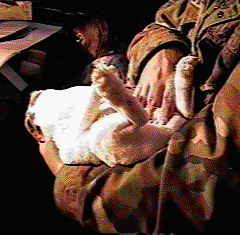Some of the Most Common Rabbit Health Problem
Abscess: Pocket or blister filled with thick white pus. Bladder sludge: Urine is very thick, like a paste, & dries at a consistency of cake-batter. Bloat: Rabbit will stop eating/drinking & will become listless, stomach will swell up & become gassy, & will present with constipation or diarrhea. Broken leg: Injury causing bone to be broken. Coccidia: May present with constipation or diarrhea with / without presence of mucous, also stops eating/drinking, listless, loss of weight, swelled belly – commonly effects weanlings and older rabbits alike. Constipation: Bowel blockage causing rabbit to be unable to defecate, may present with swelled belly, lethargy, refusal to eat/drink. Cuts / Wounds: Due to injury. Ear mites: Rabbit may shake or scratch at ears, inner ears will have appearance yellow or brownish color substance. Enteritis (BacterialL or Mucoid): Buildup of gas in stomach, very painful, loss of appetite, diar...
